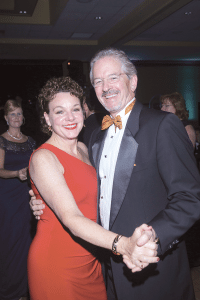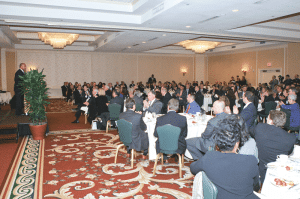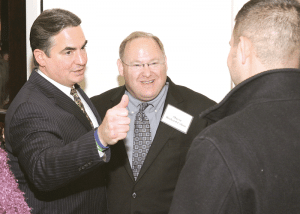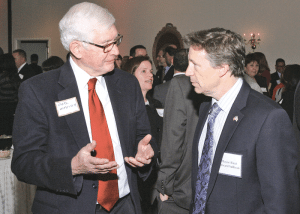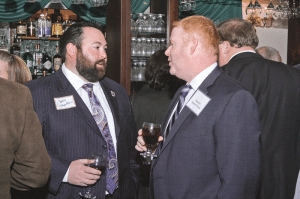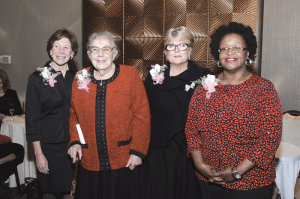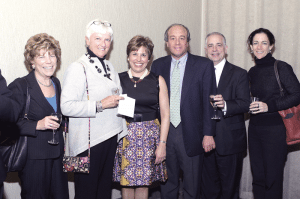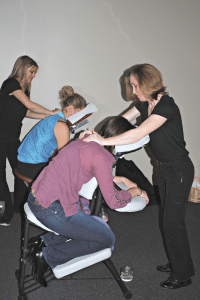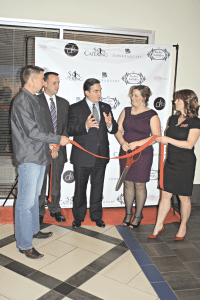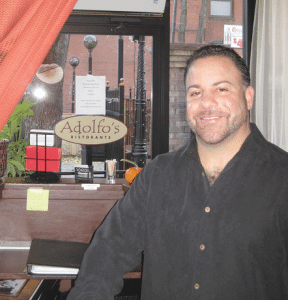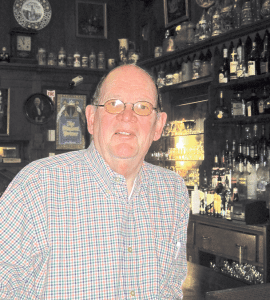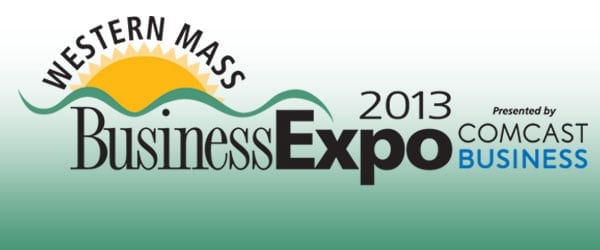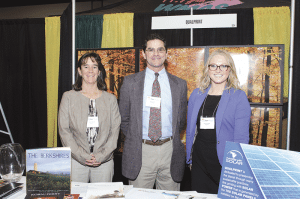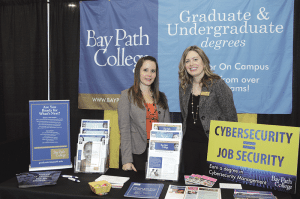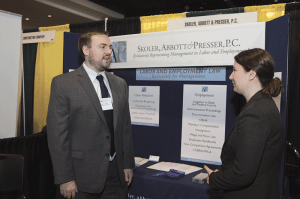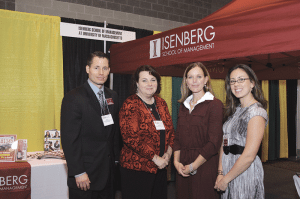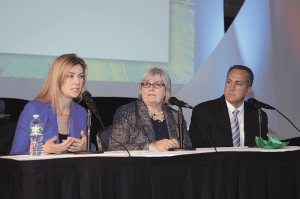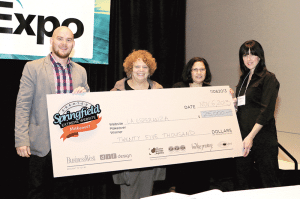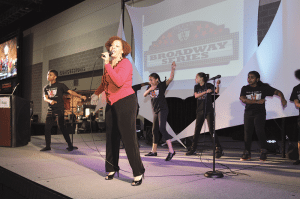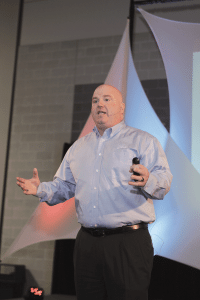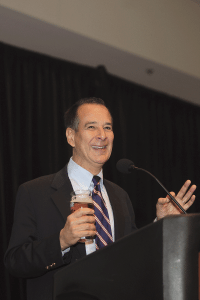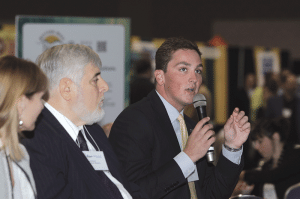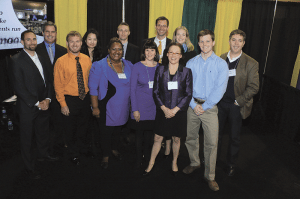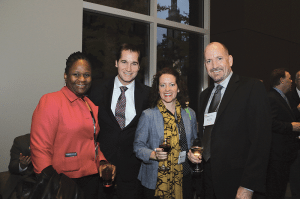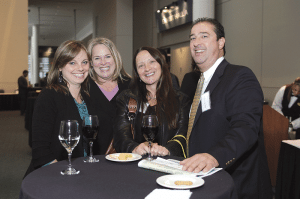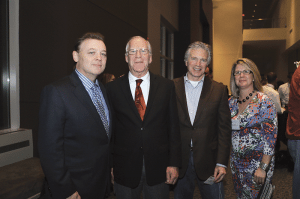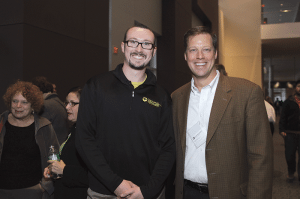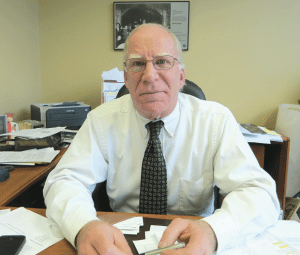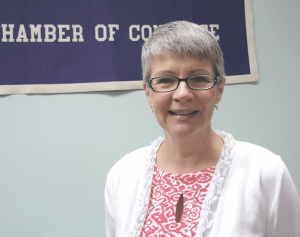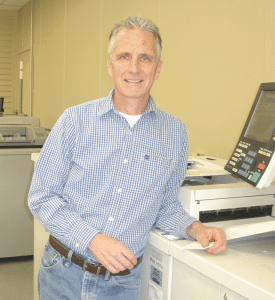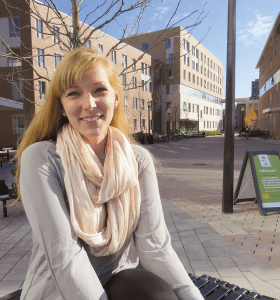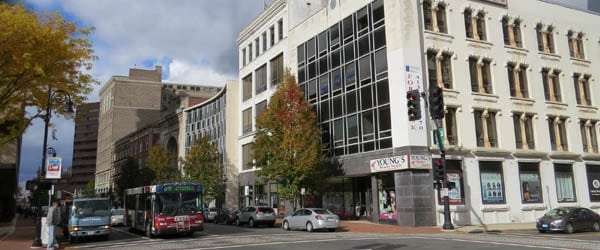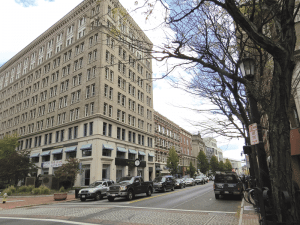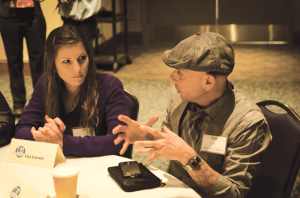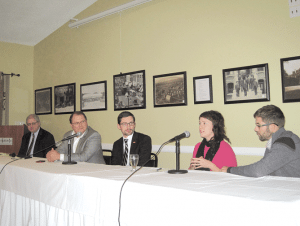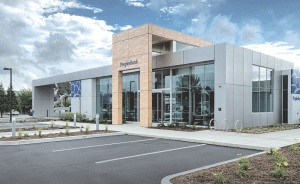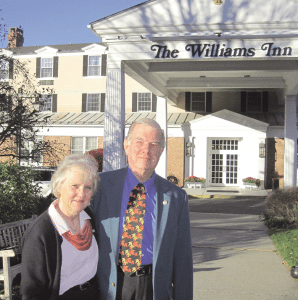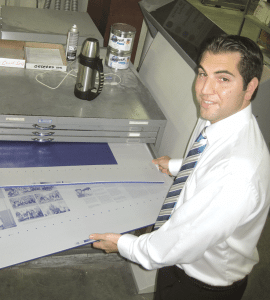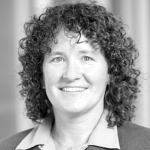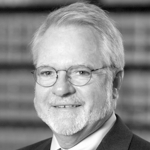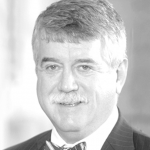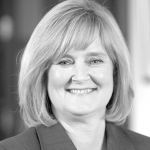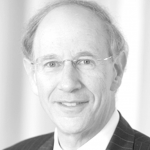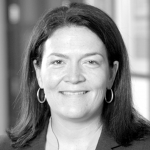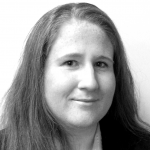Gulfstream’s Westfield Facility Is in Takeoff Mode
Fran Ahern acknowledged that the analogy isn’t perfect, but, for the most part, it works, and it helps him effectively tell the story of one of the region’s least-known — and least-understood — business success stories.“We’re a service center for airplanes,” said Ahern, general manager of Gulfstream’s sprawling operation at Barnes Municipal Airport in Westfield. He would go on to draw a number of loose comparisons between his operation and the corner garage or auto dealership where one might bring their Buick for new tires, a tuneup, or an inspection sticker.
But as he did so, he noted that he and his staff of 230 are obviously working with much bigger vehicles — and numbers — of every kind.
Indeed, the Gulfstream G650, the latest model developed by this subsidiary of General Dynamics, costs roughly $65 million out of the box. It has a 100-foot wingspan, weighs roughly 40 tons when empty, and stands 25 feet high. Meanwhile, the various hangars at the Westfield operation cover more than 200,000 square feet of real estate. The latest addition, opened earlier this year as part of a $24 million expansion, spans 125,000 square feet and has a 50-foot-high ceiling and overhead crane.
Still, the comparisons to the corner garage are effective, said Ahern, noting that, in both situations, service — which in this case is provided to Gulfstream models as well as competitors’ aircraft — is king, word-of-mouth referrals are critical for attaining vital new customers, and retention is ultimately the most important ingredient in the formula for success.
“This is a relatively small business in that everyone knows everyone,” he said of the aerospace industry and especially the service component. “This facility has a good reputation in the marketplace, and that’s through the hard work of all the employees, but it’s also a business where it’s ‘what have you done for me lately?’ So you have to continue providing quality service.”
The Westfield operation is doing well in this close-knit environment, said Ahern, noting that it is near full capacity on a regular basis — there are ebbs and flows in this business, as with most others — and the new hangar and its amenities and equipment present opportunities to keep the service slate full.
Also, the company’s diversity of products and services has enabled it to expand its client list and do more for those already on it. Examples include an expansive shop where interior work — from re-upholstering seats to installing new cabinetry — takes place, as well as a mobile service, called FAST (Field & Airborne Support Team), which brings Gulfstream technicians to the planes needing work, instead of the other way around.

Gulfstream’s expanded presence in Westfield has equated to roughly 100 new jobs and new opportunities for economic development in that area.
“There were layoffs here and elsewhere as a result of those stories and their impact,” said Ahern, adding that some segments of the industry, especially the so-called ‘large-cabin’ planes, such as the G650 and other Gulfstream models, have rebounded from those setbacks.
And the skies certainly look brighter, he went on, as corporate travel rebounds in this country and expands in rapidly developing regions of the world such as Asia and South America, where Gulfstream is expanding its presence.
“We help make the world smaller,” said Ahern, referring to corporate air travel in general and Gulfstream in particular. “And that helps people get business done.”
For this issue, BusinessWest goes behind the scenes at a company where an intriguing kind of business is indeed getting done, and an operation is taking off — in every aspect of that phrase.
The Sky Is No Limit
Tracing the history of Gulfstream’s presence in this region, Ahern said the Georgia-based company’s name went on the sign outside the former KC Aviation facility at Barnes in 1998, a time of profound growth for the plane maker — and, thus, a need for facilities to build and service the aircraft. Gulfstream actually acquired three service centers from KC, with the others in Appleton, Wis. and Dallas, Texas.
That sign on the Westfield complex would be replaced by one that said ‘General Dynamics Aviation Services’ (the defense giant acquired Gulfstream in 1999) a few years later, Ahern went on, adding that this change was yet another illustration of how this business is very much like an auto-service center.
“The KC facilities were not only working on Gulfstream airplanes, but some of our competitors’ planes,” he explained. “And when Gulfstream acquired those facilities and put up Gulfstream signs, those other airplane owners didn’t think the facility would service those airplanes any more, so they stopped coming. “
The General Dynamics signs helped bring them back, he told BusinessWest, adding that the eventual strategy was to go back to Gulfstream signage, but with an intense marketing effort, one aimed at hammering home the point that the company was the only original equipment manufacturer (OEM) to service other OEM’s planes. Today, the facility at Barnes also services planes made by Bombardier, Dassault/Falcon, Cessna, Hawker Beechcraft, and others.
There have been few such instances of turbulence (another industry term) since Gulfstream came to Westfield as part of a broader effort on the part of the company to build service capacity across the country and, more recently, around the world, said Ahern.
The corporation, which first went into business with twin propeller jets in 1958, now has similar facilities domestically in Appleton; Brunswick, Ga.; Dallas; Las Vegas; Lincoln, Calif.; Long Beach, Calif.; Savannah, Ga.; Westfield; and West Palm Beach, Fla. It has also sites in Mexicali, Mexico; Luton, England; Beijing, China; and Sorocaba, Brazil.
These locations were chosen for strategic purposes, said Ahern, adding that they service geographic sectors and, especially in the case of the international locations, regions with strong growth in corporate air travel.
While the Westfield location, like all the others, handles what Ahern called “unscheduled maintenance” — planes based outside this area but which are in the Northeast and need service — the bulk of the aircraft in the hangars at any given time are based in New England and surrounding states such as New York and New Jersey. The Bay State’s sales-tax exemption on aircraft parts and maintenance, which has withstood several recent attempts to eliminate it, gives the Westfield location a competitive advantage that Ahern and others at Gulfstream certainly don’t want to lose.
The facility at Barnes specializes in everything from airframe maintenance to inspections; from avionics (instrumentation) services to that aforementioned interior work, which accounts for roughly 15% of the total volume. Much of the engine and airframe work is required, or scheduled, maintenance, he went on, adding that there are regular, hourly driven inspections for such aircraft.
The customer list is equally diverse, he continued, noting that it includes corporations, wealthy individuals, and commercial fleet operations such as Net Jets.
Ahern said the expansion completed earlier this year was driven by market demands for more capacity, and the simple fact that many of the latest large-cabin planes, such as the G650, were simply too big for the hangars at Barnes at the time.
To drive that point home, he pointed to the tail section of a G450 being serviced in one of the older hangars. There was probably less than five feet of clearance between the top of the tail and the ceiling, he said, adding that the G650 simply wouldn’t fit in that building.
Soar Subject
As he talked with BusinessWest in the new hangar at the Westfield location, Ahern pointed toward the back corner of the facility and something called a ‘tail dock.’
This is a moveable set of scaffolding, which, as the name implies, allows technicians easy and effective access to a plane’s tail assembly.

The new hangar at Gulfstream’s Westfield facility provides the room — and opportunities — for continued growth.
Another example is the overhead crane that was being used on this day for engine replacement on a G450, he noted, adding that, prior to the expansion, the facility would have to rent such equipment, an arrangement that was less efficient and less cost-effective.
Overall, the $24 million expansion project enables the company to add capacity — more and different kinds of jets can fit in the hangars — and also improve service to customers and broaden its impact on the community and local economy.
Elaborating on the service component, Ahern again referenced this tight industry sector where everyone knows everyone else, and noted that good experiences for customers lead not only to repeat business and word-of-mouth referrals, but also to some of those new models rolling out of Gulfstream assembly plants.
“You provide good service and a quality product to those customers with competitor aircraft, and maybe at some point, when they’re upgrading their airplane, they’re going to think about maybe upgrading to a Gulfstream,” he explained. “We have a saying around here: ‘product support sells new airplanes.’”
As for impact within the community, Ahern said it starts with the roughly 100 new jobs that have been added, many of which required technical skills and are good-paying positions. Meanwhile, with more planes in the hangars, the company can broaden its economic impact, he said, noting that the jets’ crews will stay in the area, often for several days, while they’re being serviced, staying in local hotels and dining at area eateries.
And from the economic-development standpoint, the state-funded expansion of Airport Industrial Road — one of the local and state incentives offered to induce Gulfstream to expand in Westfield — makes industrially zoned property at the airport more accessible for development, he noted.
Looking ahead, Ahern said, while the hangars are full many days, as they were when BusinessWest visited, there is always room for growth.
Elaborating, he said the company has to minimize those aforementioned peaks and valleys — to the extent possible — and move ever closer to what he called utopia: “100% loaded, 100% of the time.”
“Our goal is to get there, and right now, we’re pretty close,” he said, adding that, while the additional room and amenities in the expanded facilities, as well as programs like FAST and positive reviews in such industry publications as Professional Pilot magazine and Aviation International News will help close that narrow gap, ultimately, it’s quality of service that will eventually get it done.
Smooth Landing
While acknowledging that comparisons between service to the family mini-van and a $60 million jet aren’t perfect, Ahern said the principles of both business operations are essentially the same.
The tires may be a lot bigger on the jet, and the cost of the services provided to it will likely have a few more zeros, but in the end, it comes down to the customer’s experience, he noted, adding that Gulfstream has become an industry leader by understanding this and, more importantly, making those experiences positive.
And that’s plain speaking — or plane speaking, as the case may be.
George O’Brien can be reached at [email protected]









